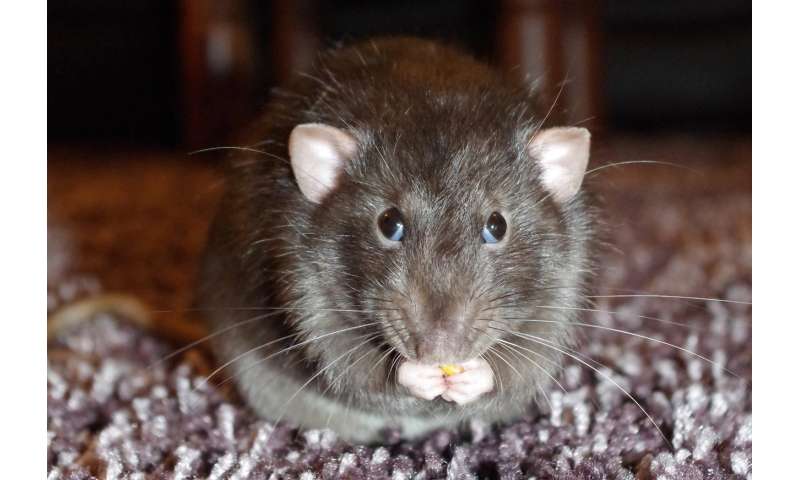begin quote from:
Rats avoid hurting other rats

Most humans feel bad about hurting others. This so-called "harm aversion" is key to normal moral development and is reduced in violent antisocial individuals. Unfortunately, little is known about what makes people harm-averse, and medical practitioners lack effective pharmacological treatments for violence in psychopathic criminals characterized by a lack of harm aversion.
In a new paper published in Current Biology, a team of neuroscientists of the Netherlands Institute for Neuroscience (NIN) shows that male and female rats show harm aversion. This phenomenon depends on the same brain region associated with empathy in humans. This indicates that harm aversion is deeply ingrained in biology, and paves the way to future work on increasing harm aversion in psychiatric conditions.
Candy for me, pain for you
It is widely believed that only humans have moral sentiments, while animals are selfish—in the struggle for life, they care about themselves and their offspring, but not strangers. In this study, the researchers investigated whether this is true. The scientists gave rats a choice between two levers they could press to receive candy (sucrose pellets).
After the rats had developed a preference for one of the two levers, the scientists rewired the delivery system so that pressing the preferred lever also delivered an unpleasant electric stimulation to the floor of a neighboring rat. The shocked neighbor reacted by squeaking their protest. Rats stopped using their favorite lever as soon as obtaining the candy meant hurting their neighbor. This was true whether the neighbor was a rat they had shared their home cage with or a total stranger. "Much like humans, rats thus actually find it aversive to cause harm to others," explains Dr. Julen Hernandez-Lallement, first author of the study and researcher at the NIN.
To explore whether there is similarity between harm aversion in rats and humans, the researchers went one step further. In humans, functional magnetic resonance imaging experiments show that the anterior cingulate cortex, a region between the two hemispheres of the brain, lights up when people empathize with the pain of a fellow human. The researchers had recently shown that the same region in the rat contains emotional mirror neurons—neurons that map the witnessed pain of another rat onto the witness' own pain neurons.
In the present study, they reduced brain activity in the same region in the rat by injecting a local anesthetic and observed that rats then stopped avoiding to harm another rat for candy. "That humans and rats use the same brain region to prevent harm to others is striking. It shows that the moral motivation that keeps us from harming our fellow humans is evolutionary old, deeply ingrained in the biology of our brain and shared with other animals," says Dr. Valeria Gazzola, one of the senior authors of the study and group leader at the NIN.
Are rats altruistic?
Does that mean that rats care about the welfare of other rats? This question is difficult to answer. "Perhaps a rat stops pressing the harmful lever because it doesn't like to hear another rat squeak—just as we do not like to hear a crying baby on a transatlantic flight. Perhaps they do so because they really feel sorry for their neighbor. We don't know whether our rats had a selfish or altruistic motivation. But I would argue that we don't always know the motives behind the good deeds of humans either," adds Prof. Christian Keysers, group leader at the NIN. "Whatever the motive, that we share a mechanism that prevents antisocial behavior with rats is extremely exciting to me. We can now use all the powerful tools of brain science to explore how to increase harm aversion in antisocial patients."
No comments:
Post a Comment